What's New
Displaying results 4491 - 4500 of 4914

Resource | Fact Sheets,
The estimates and data provided in the following tables relate to 2005 unless stated otherwise. These estimates have been produced and compiled by UNAIDS/WHO.
They have been shared with national AIDS programmes for review and comments, but are not necessarily the official estimates used by national governments. In order to calculate regional totals, older data or regional models were used to produce minimum estimates for these countries. The estimates are given in rounded numbers. However, unrounded numbers were used in the calculation of rates and regional totals, so there may be minor discrepancies between the regional/global totals and the sum of the country figures.
The new estimates in this report are presented together with ranges, called 'plausibility bounds'. These bounds reflect the certainty associated with each of the estimates. The wider the bounds, the greater the uncertainty surrounding an estimate. The extent of uncertainty depends mainly on the type of epidemic, and the quality, coverage and consistency of a country's surveillance system.
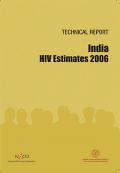
Resource | Publications,
A systematic and consultative HIV estimation process has been ongoing in India since 1998. During the year 2005–2006 a series of activities were initiated to improve the estimation methodology, and the input data base for estimation has been enriched with the availability of multiple data sources.
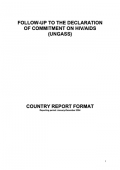
Resource | Publications,
Ever since the first case of HIV/AIDS was reported in Thailand in 1984, it had become a widespread problem affecting Thai people’s health, social life and economy. The HIV/AIDS pandemic began with the first HIV/AIDS transmission from an infected homosexual to a commercial sex worker in Thailand. Since then, it had spread to promiscuous men, housewives and eventually to the general public.
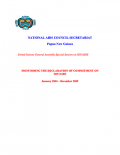
Resource | Publications,
After the first detection of HIV/ AIDS in the country in 1987 the number of HIV infection has increased dramatically over the last eighteen years. At the end of 2002, HIV/AIDS epidemic in PNG was considered to have reached a generalized state. The total number of reported cases in 2002 was 1715 and the annual reported cases of HIV for 2003 and 2004 were 2299 and 2490 respectively. By June 2005 the number of reported cases had reached 1089 in that year. The cumulative total of HIV infection from 1987 to June 2005 was 12,341.
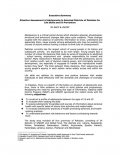
Resource | Publications,
Adolescence is a critical period during which dramatic physical, physiological, emotional and behavioral changes take place quite suddenly. These changes coupled with the absence of authentic information to know, understand and appreciate them, cause anxiety among adolescents who may be pushed into courses of actions without having a chance to think fully of consequences.

Resource | Publications,
The global AIDS response has steadily grown and gained momentum since UN Member States made a Declaration of Commitment on HIV/AIDS at the 2001 Special Session of the UN General Assembly. This momentum has occurred within wider efforts to place countries more firmly in command of their own development programmes. Based on these developments, UNAIDS is facilitating a multi-partner, country-driven effort to scale up towards Universal Access.
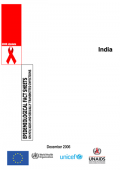
Resource | Fact Sheets,
The estimates and data provided in the following tables relate to 2005 unless stated otherwise. These estimates have been produced and compiled by UNAIDS/WHO. They have been shared with national AIDS programmes for review and comments, but are not necessarily the official estimates used by national governments. In order to calculate regional totals, older data or regional models were used to produce minimum estimates for these countries. The estimates are given in rounded numbers.

Resource | Publications,
The first case of AIDS was identified in Indonesia in 1987 in a foreign male tourist. During the decade thereafter, the epidemic appeared to grow slowly, spreading primarily among men and almost exclusively through sexual transmission. In the mid-1990s, however, injecting drug use, which historically had been very limited in Indonesia, began to increase dramatically. Community workers who were aware of the phenomenon expressed concern about the threat of HIV in the growing population of injecting drug users (IDUs).
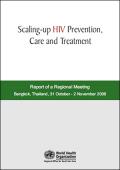
Resource | Publications,
The HIV epidemic in the South-East Asia Region is a source of growing concern. An estimated 7.2 million people were living with HIV/AIDS at the end of 2006. Of these, 1.9 million were younger than 25 years of age, including 120,000 children. South-East Asia bears the second highest number of HIV-infected persons among all WHO Regions, behind sub-Saharan Africa.
The meeting brought together senior representatives from the Ministry of Health, programme managers from national AIDS programmes as well as from reproductive health and adolescent health programmes, representatives from nongovernmental organizations (NGOs) and development partners to exchange information and provide a platform for technical and strategic discussions on scaling-up HIV prevention, care and treatment interventions.
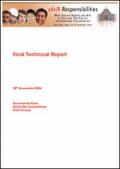
Resource | Publications,
Despite evidence establishing male-to-male sex as one of the driving forces of HIV transmission in the Asia and Pacific region, few strategic interventions address male-to-male and transgender sexualities and related HIV vulnerabilities.
In recognition of the need for building and strengthening interventions addressing HIV related vulnerabilities of males who have sex with males (MSM) in the Region; the Male Sexual Health and HIV in Asia and the Pacific - International Consultation was organised in New Delhi, India from September 23-26, 2006, with the tagline “Risks and Responsibilities.”
This regional consultation provided a space for dialogue, learning, networking, and skills building, towards enabling the expansion, strengthening and scaling up of strategies addressing sexual health and related HIV vulnerabilities in relation to males who have sex with males and transgender people. In addition, the consultation provided an opportunity to inform and develop strategic advocacy initiatives and deliberate on key policies related to these issues.





